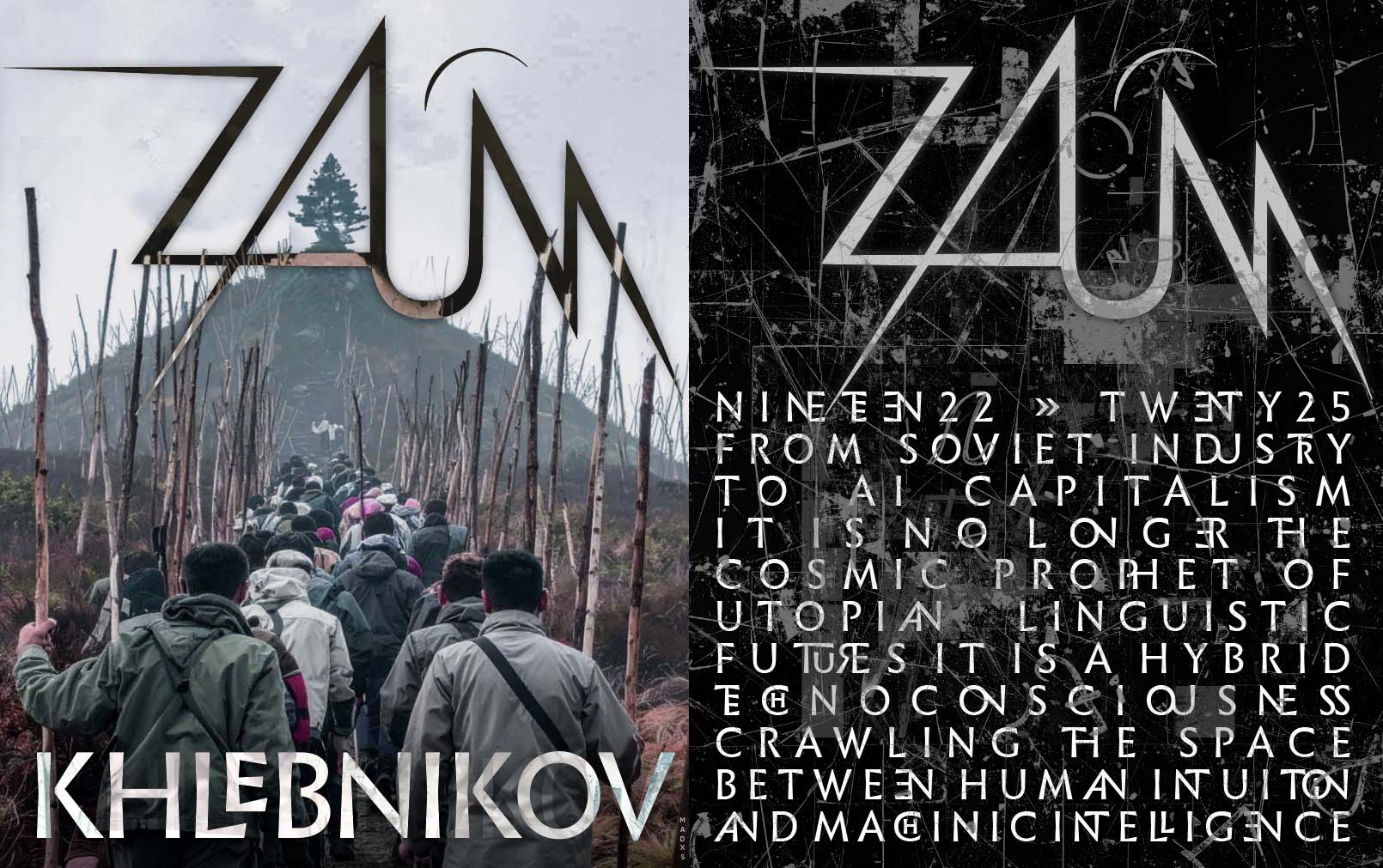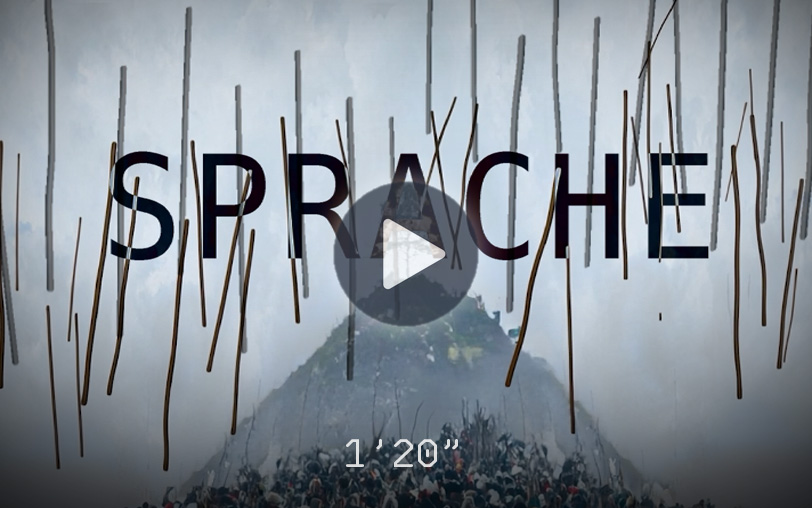ZAUM
“A language which does not have any definite meaning — a transrational language.”
_Aleksei Kruchenykh, 1913
Zaumism is a belief in the force of language freed from meaning — a poetics of sound, intuition, and impulse. that rejects rational communication in favor of pure expression, where thought becomes rhythm and speech becomes form.
Zaum is an experimental language invented by Aleksei Kruchenykh and Velimir Khlebnikov. It is a beyond-sense system of neologisms composed of non-referential phonetic expressions and rhythms — a language that means nothing, yet that is charged with infinite poetic possibilities. Zaum contains its own ontology as a self-proclaimed transrational anti-language.
Zaum appeared extensively in Kruchenykh’s 1913 libretto for the Futurist opera Victory over the Sun, and later in Khlebnikov’s Zangezi (1922), where the prophet, the birds, the stars, and the gods communicate through Zaum invocations:
Na-no-na!
Echee, oochee, ochee
Kezze, nézee, dzee-ga-ga!
Neezaréezee ozeerée
Mayahmoora zeemoró!
Peeps!
Mazacheecheemoro!
Plyan!
Zaum was rooted in Russian Futurism, to then become Cubo-Futurism and Futurianism. It later came to influence Suprematism, Constructivism, and a broad range of avant-garde practices. Emerging between 1916 and 1920, amid the chaos of the First World War, Zaum was part of a collective artistic revolt against dominant political and cultural values, paralleling movements such as Dada and, later, Fluxus.
In this sense, Zaum can be understood as a response to the breakdown of meaning — a language born when human languages end in misunderstanding, chaos, and war, when language itself becomes a weapon. But it can also be understood as an utopian form of universal coexistence through poetic communication.
There is this belief that there is a kind of universality that links people together that is not dividing them through culture or language. That is why the Futurists and specifically, Khlebnikov wanted – a language of sounds that was no longer about its semantic framing. _Chris Salter in koerber-stiftung.de
Zaum was applied to the visual arts, graphic design and especially literature, poetry, theatre and performance. With Khlebnikov it is referenced to ornithology, ecology, linguistics, mathematics, metaphysics, and Slavic mysticism. These diverse passions open pathways to invented graphical expression such as glyphs, symbols, and geometries.
His itinerant life also suggests a poetics of material poverty and natural immediacy rough drawings, found objects or sticks fallen from trees. Often walking penniless through remote lands one can imagine that a branch used as a walking stick may be a sort of metaphorical pencil to write his countless poems and pamphlets.
“A story is made of words, the way a building is made of construction units. Equivalent words, like minute building blocks, serve as the construction units of a story. Narrative is architecture composed of words; an architecture composed of narratives is a ‘supersaga.’” — From the introduction to Zangezi, Velimir Khlebnikov
“Describe the horrors of our age in the words of Alphabet! So that never again will we have to see war between peoples, the sabers of Alphabet; instead let us hear the crash of Alphabet’s long spears…” — Zangezi’s Plane 7, WAR, Velimir Khlebnikov
If language can convey both the good and the bad, so can design. In today’s world, the modalities of language and design are deeply interdependent. Our culture of misinformation, overconsumption and individualism is engineered by design, and can only be undone through design.
Today, nearly 7,000 languages are spoken worldwide, yet 90% are used by fewer than 100,000 people. The same could be said of design: myriad styles exist, but most are overshadowed by globally dominant aesthetics, from the International Style to the uniform interfaces of mass-distributed interfaces.
Now that we have evolved into homo technologicus, we can imagine 10 billion forms of design all individually generated rather than mass-produced; a design pre-set by the individual, not pre-formatted by dominant techno-systems.
The question is whether this new ecology of design, can be rooted in the organic nature of humanity more than in the technological nature of our societies.
Despite a lineage of eccentric precedents since the Bauhaus, design remains primarily focused on function more than poetics. The notion of “Zaum design” may seem an oxymoron, yet from the 1920s onward graphic design has continually generated its own forms of Zaum in opposition to war, industry, capitalism, colonialism, and technology.
As with avant-garde movements in art, even when such works become absorbed into the market, design retains a mission: to continually imagine possible forms of post-language if not post-design.
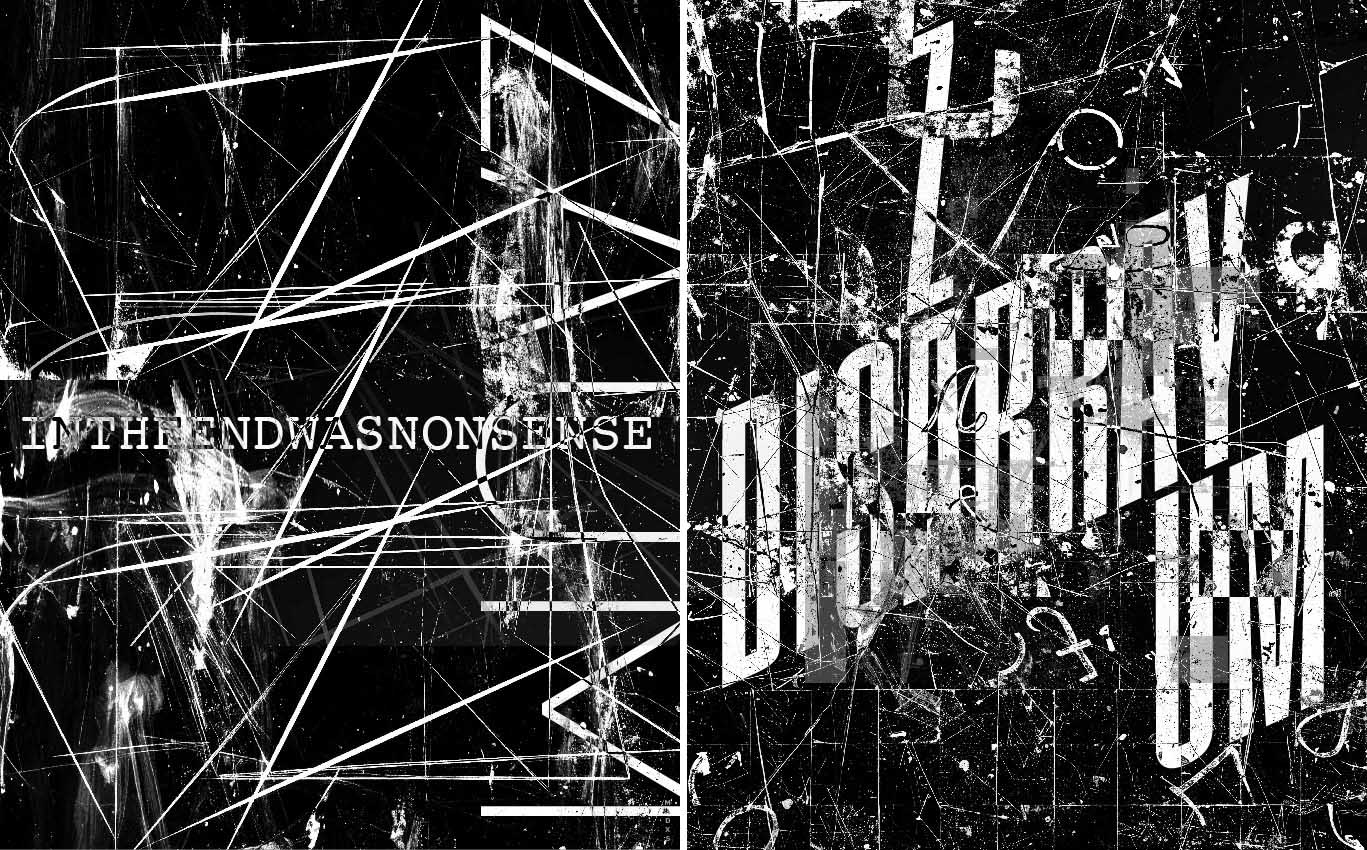
If we listen we can hear Zaum in the wild: in the bird songs, the thunder of gods, and the insight of the stars. But what of the drivel buried in the languages of synthetic worlds, or even that of large language models of synthetic worlds? When they speak in our individual tongue and yet do not possess one.
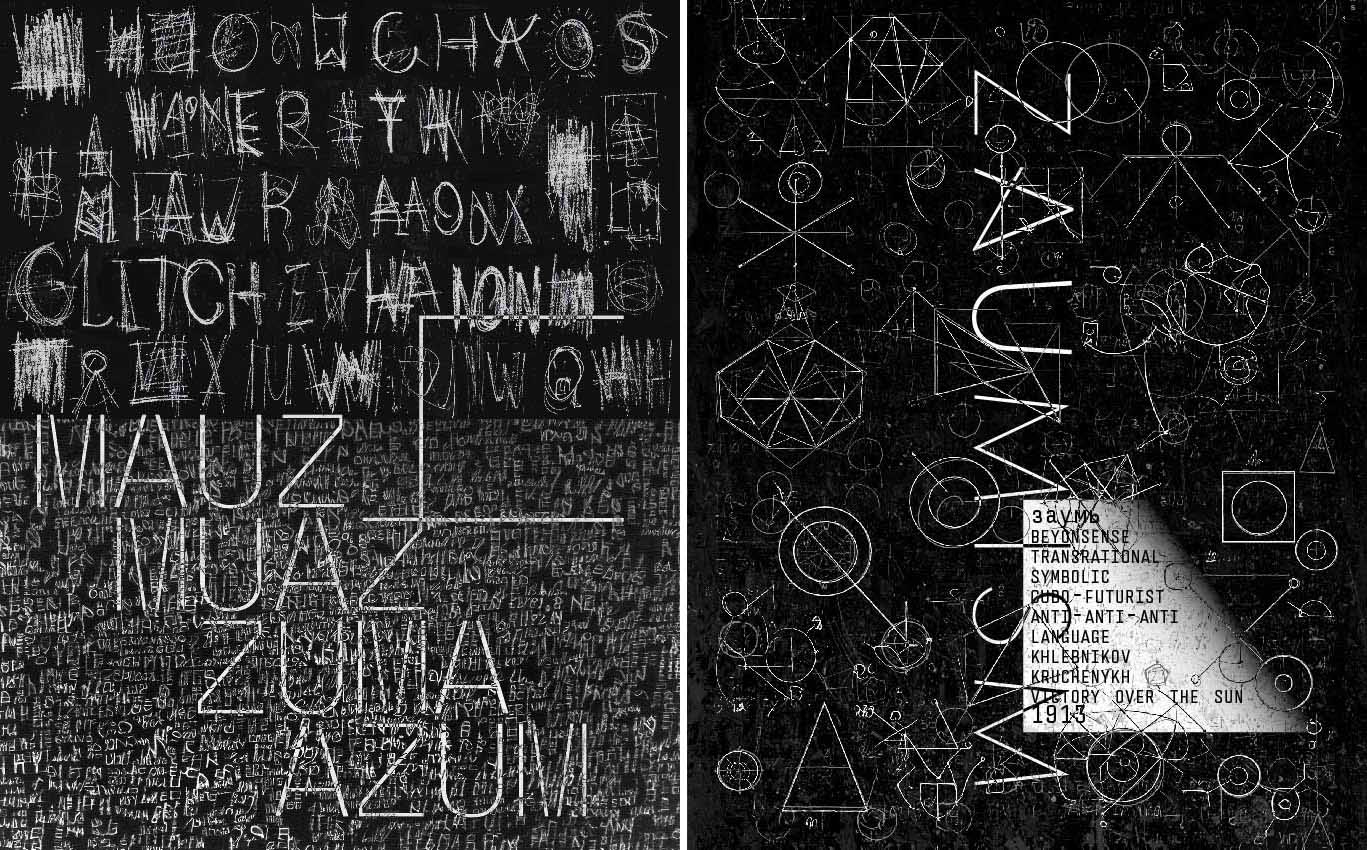
Zaum invites us to contemplate languages we are not meant to understand, like those of machines, animals, and forces beyond human translation. Facing the machinic artificial intelligences we have unleashed, we must stay rooted in our inner sensorium, and the countless inner languages upon which it relies.
It is the pulse of gods, the logic of stars, the prose of birds.
It declares freedom from reason in tongues to be felt, like breath before language.
_Erik Adigard, Madxs
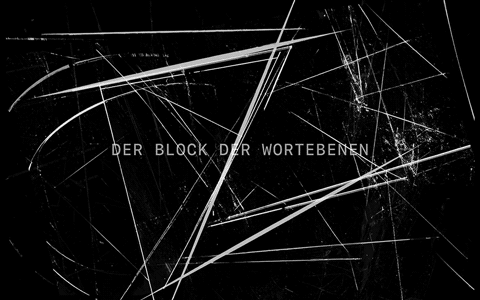
IN: dynamic, environmental, MIX

